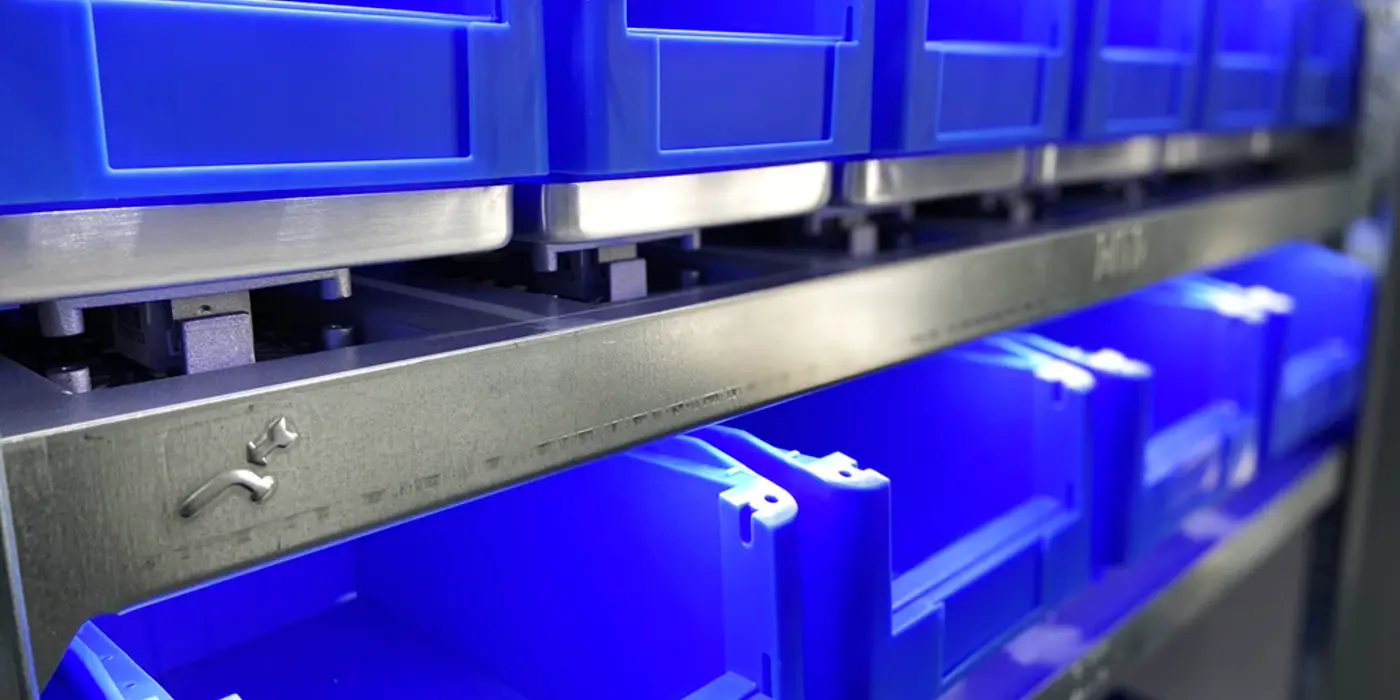Implementing RFID and IoT Solutions for Remote Inventory Tracking and Control

When it’s time to check on-hand inventory levels but no one is physically standing in the stockroom or the warehouse, remote inventory management solutions can be incredibly useful. RFID technology and IoT inventory management solutions help distributors, retailers, and businesses of every type to save time and resources. Read on to learn about IoT inventory management and RFID solutions for remote tracking.
What Is IoT Inventory Management?
IoT stands for Internet of Things and refers to any item that is connected to the internet. IoT devices include internet-connected TVs, home security systems, smart watches, sensors, RFID tags and more.
In inventory management, IoT devices such as weight sensors and RFID labels can be used for remote monitoring and tracking of assets, inventory, and tools. Weight sensors under bins of items allow users to do physical inventory counts remotely, and use min/maxes to trigger auto-replenishment orders with minimal labor costs. RFID can be used to track took check-outs or to do two-bin kanban replenishment without the hassle of physical cards.
Understanding RFID Technology
RFID stands for radio frequency identification and has been used for many purposes over the last few decades. RFID technology has helped track objects and match them to corresponding information in countless use cases.
RFID solutions leverage three components in order to store and access information corresponding with a specific object.
- Tags: RFID tags are generally about the size of a grain of rice. These tags can take many forms, such as microchips, labels, or cards. Some RFID tags have a built-in power source like a battery, while others don't. They all include an antenna for sending radio waves.
- Scanners or readers: In order to access the information stored on an RFID tag, users must scan the tag with a reader. Readers also have antennas, which allow them to send out and receive radio waves with tags within their range. These radio waves allow them to read the information stored in the tag. Readers may be handheld, mounted, or incorporated into the technology of another device.
- A backend system: The data collected by RFID readers is stored and organized in a backend system, which can include software and databases such as inventory management systems and asset tracking software.
RFID solutions are often used in inventory management to help teams quickly and efficiently identify items and access pertinent information.
Benefits of RFID and IoT
RFID and IoT inventory management tools offer important benefits to both distributors and their buyers. Benefits include:
- Automation: IoT solutions can automate physical inventory counts and order placement without human intervention, reducing procurement costs by up to 90%.
- Reduction of cash-in-inventory: IoT and RFID technology allow for more precise ordering and tracking of on-hand inventory levels, reducing carrying costs and cash-in-inventory by up to 73%.
- Elimination of stockouts and shrinkage: By reducing the opportunity for human error and improving traceability, RFID and IoT solutions help eliminate stockouts and shrinkage.
- Real-time visibility: Users can access inventory levels and asset information anytime, anywhere.
- Increase in ROI: The reduction in labor required for inventory management helps improve the bottom line.
- Extension of salesforce: Both distributors and buyers can reduce the work hours required for cycle counting and order placement.
- Decrease in labor expenses: Distributors can eliminate the need for in-person visits with remote inventory tracking solutions.
- Increase customer reach: Without the need to physically visit every customer, distributors can take on buyers from a wider geographic area.
Future Trends of Remote Inventory Tracking
As demand for remote inventory tracking continues to grow, technology is being developed to suit specific industry needs. For example, electronic shelf labels address the space constraints that healthcare clinics and hospitals often have in their inventory storerooms.
RFID technology itself is growing more powerful, with increasing read ranges allowing for easier and more accurate tracking. In some spaces, AI and robotics have the potential to revolutionize inventory management processes through autonomous scans and advanced data analytics.
Implementing RFID and IoT Solutions for Remote Inventory Tracking
Selecting the right RFID and IoT solutions for remote inventory management depends on the specific needs of each distributor or customer.
Examples of RFID and IoT implementations for remote inventory management:
- Remote physical inventory counts with IoT weight sensors. Solutions like TrackStock SensorBins compare weights to a minimum and trigger orders up to a maximum.
- Tool tracking with RFID tags and readers. Check tools in and out by passing them by an RFID reader.
- Digital kanban inventory management. A 2-bin system where the empty bin is passed by an RFID tower.
- Electronic shelf labels. Users trigger digital auto-replenishment with buttons. This is a customer managed inventory model that helps distributors remotely manage their customers’ inventory replenishment.
Depending on the storage systems used and the types of items stored, an organization can select the best sensors and devices for their space. For example, electronic shelf labels work well in small stockrooms where multiple bins may be stacked on top of one another. In situations where each item has its own designated bin, SensorBins are often the best fit.
Regardless of the storage setup and the inventory management system at hand, eTurns offers IoT and RFID solutions to help reduce costs and enable remote inventory management.
Please contact us today to learn more about how TrackStock's IoT and RFID solutions can save you labor and increase profitability.





